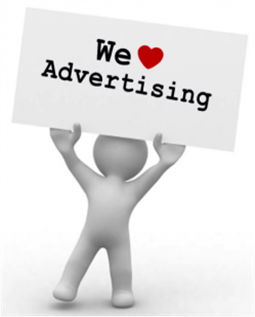 First-time Internet entrepreneurs often have unrealistic expectations regarding advertising revenue in their financial projections. It’s not enough to say “hey, it worked for Facebook.” Not only was Facebook a rare exception; it remains to be seen whether or not they can monetize their user base at anywhere near the value implied by their valuation.
First-time Internet entrepreneurs often have unrealistic expectations regarding advertising revenue in their financial projections. It’s not enough to say “hey, it worked for Facebook.” Not only was Facebook a rare exception; it remains to be seen whether or not they can monetize their user base at anywhere near the value implied by their valuation.
Internet startups can expect to generate very little revenue during the first few years while it is still relatively unknown and user counts are still low. Until you get a million page-views a month, your revenue will be negligible – certainly not enough to pay the rent and salaries for your team!
Content is a tough business. It can be very successful like it now is for Facebook, but entrepreneurs usually underestimate how long it will take for site traffic to ramp up. They might see early traction due to early promotions or exposure at SXSW, but then reality sets in.
To better understand these realities, let’s clarify some terminology. If you’re new to content business models, some of the terminology may be unfamiliar:
- Pay per view (PPV) or pay per impression (PPI). With this model, you get paid for each ad view or page-view (same as impression, or eyeball). For advertisers, this is usually expressed in terms of cost per thousand impressions (CPM). This model was common until Google popularized the idea of the next model.
- Pay per click (PPC). In this model, advertisers pay each time a user clicks on an ad. The ad can be shown an unlimited number of times, but the advertiser does not pay unless the ad is clicked on. Of course, if nobody is clicking on the ad, the site publisher is going to stop running that ad in favor of ones that produce revenue. If you’re a publisher and you want to run ads on your site, you can sign up with Google AdSense. Google automates the process of displaying ads that are likely to get clicks; in exchange, Google splits the ad revenue with you, the site publisher.
- Pay per action (PPA) or pay per lead (PPL). This advertising model was created because some content publishers found ways to fraudulently simulate clicks, thereby earning CPC revenue at the expense of the advertiser. In the PPA model, the advertiser pays only if the person clicking on the ad completes an additional action, such as making a purchase or filling out a Contact Us form.
Entrepreneurs have a chicken-and-the-egg problem. In order to grow, they need funding. In order to obtain investor interest, they need to project substantial growth – projections of $50 million revenue or more in five years is common.
The more diverse your expected audience, the lower your potential revenue per user, because only a small percentage of your visitors will be interested in clicking any given ad. On the other hand, the more specialized your audience, the more likely you are to be able to serve up very targeted ads that advertisers will place a premium on.
You need to study your content strategy, the profile of your expected audience, and find out how much revenue an average visitor represents for your niche. Quite often, you won’t be able to find this information anywhere – you’ll need to run some test ads and gain this knowledge through experience.
Once you know that, you can do the math to figure out how many visitors and page views you’ll need to achieve at least $50 million in revenue. You may be surprised by how big the number is. Your challenge, now, is to develop a strategy for attracting that many users.
And one more thing: it’s going to be a while before you have enough traffic to achieve positive cash flow. You’ll need to bridge the gap through other means. Even if you have a brilliant plan, finding investors is never a sure thing, so be sure to have a Plan B.


















